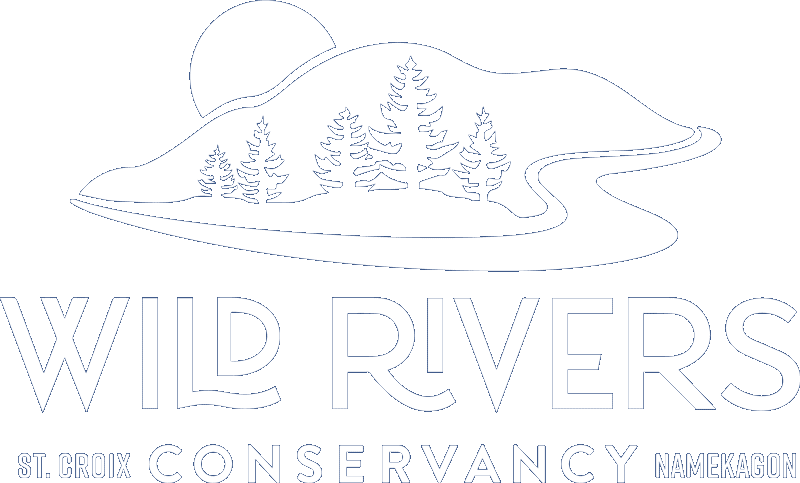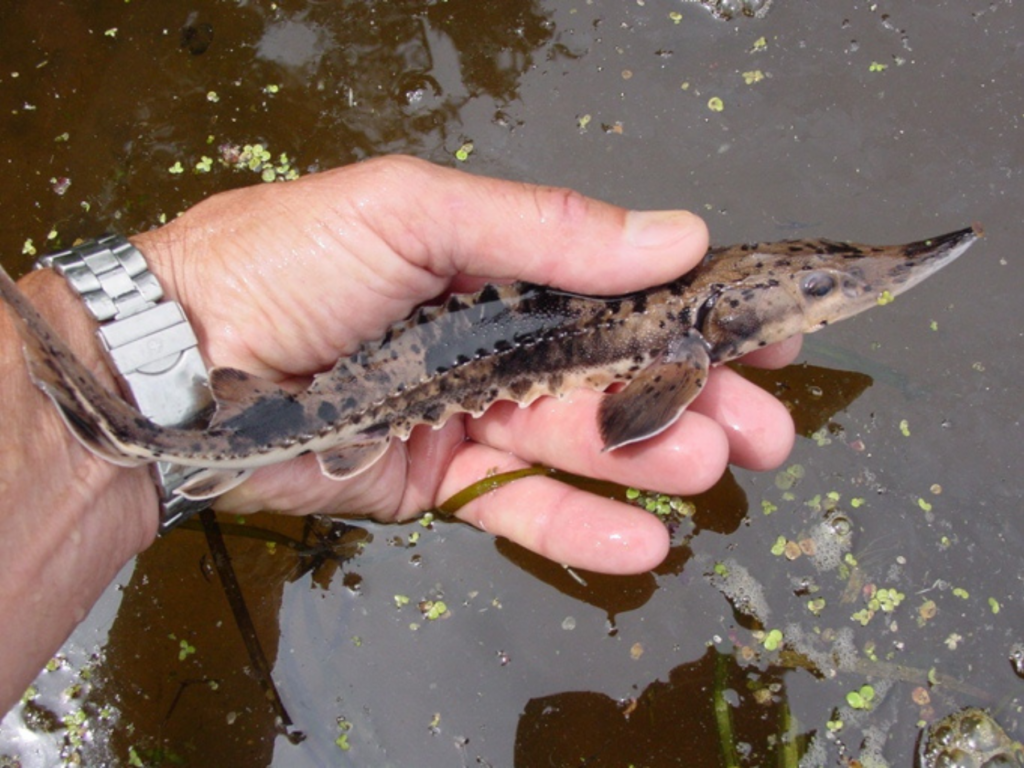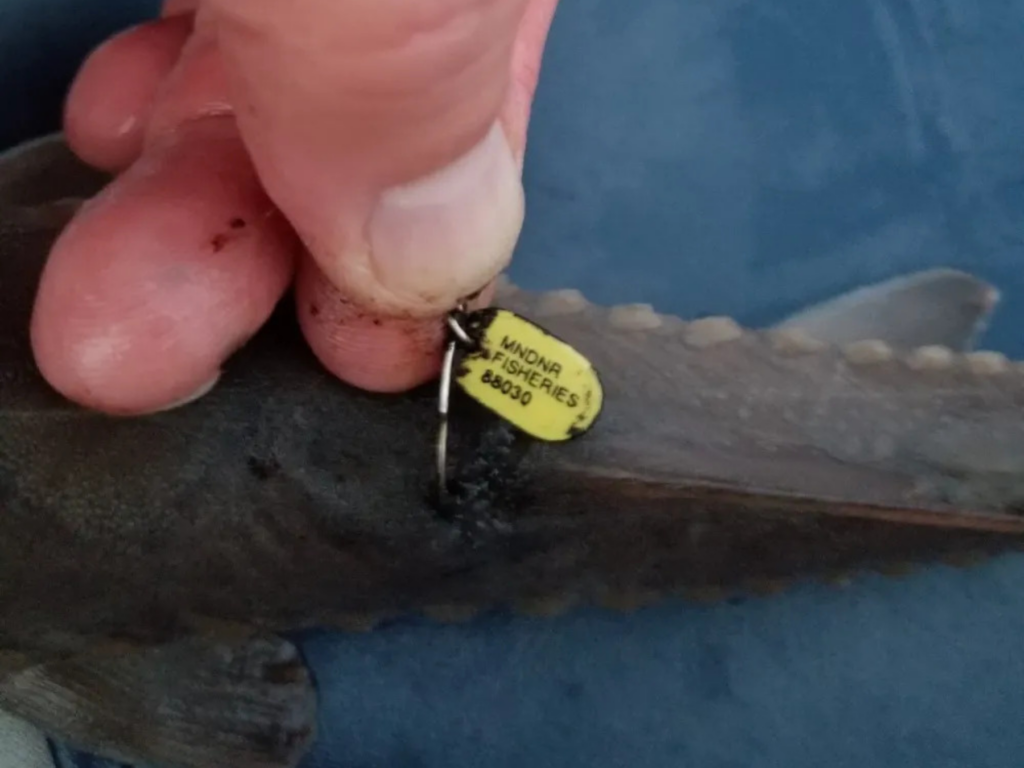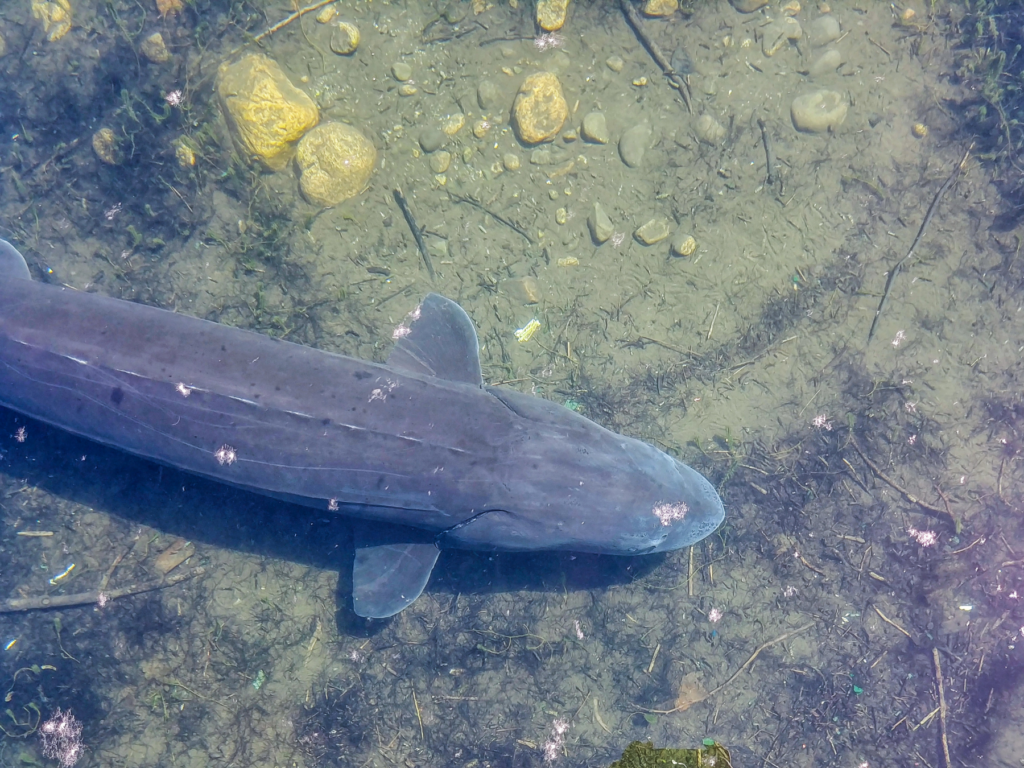The Lower St. Croix River’s designation as a Wild and Scenic River set in motion a chain of positive events. Blufflands have been protected, helping to keep the river’s water clean and maintaining habitat for the plants, birds, and animals that we thrill to see. Once-private shorelines have become parklands where everyone can enjoy fishing and swimming. Careful planning has helped river communities retain their charm and become more vibrant. Here are a few of many places that would be very different if not for the lower St. Croix’s designation fifty years ago.
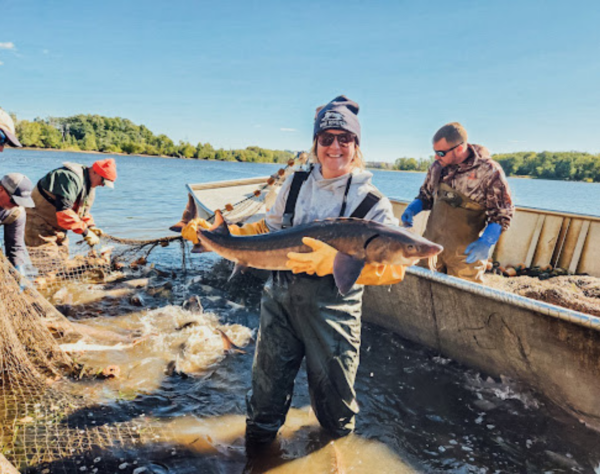
These freshwater giants can live to be over 100 years old and grow to be a whopping 7 feet long and 200 pounds. Despite their impressive size, lake sturgeon have the curious but spectacular habit of leaping entirely out of the water, appearing to stand on their tails, and then landing with a resounding splash. Experts theorize that this may be an attempt to shake off lampreys, parasitic fish that attach to host fish. Most adult sturgeon have one or more old lamprey scars and it is not uncommon to see six or more lampreys attached to one fish.
The distinctive appearance of the sturgeon adds to the sense of awe when these fascinating creatures are spotted in our waterways. Shark-like caudal fins and five rows of bony plates along its body define a dinosaur-like profile. Eyes with diamond-shaped pupils sit atop a slender snout with four barbels, or feelers, dangle in a row on the underside of the snout by its ventral mouth. The barbels are sensory organs that alert the fish to the presence of food as the fish coasts slowly over the bottom of its watery habitat.
The Ojibwe word "Namekaagong-ziibi" means "river at the place abundant with sturgeon" and is the namesake of the Namekagon River. Preservation of habitat and free flowing water are crucial to the survival of sturgeon. Changes in habitat have reduced sturgeon reproduction. Dams prevent the fish from traveling to their spawning grounds; the change in water flow brought about by hydroelectric power plants may reduce the number of bottom organisms lake sturgeon feed on and interfere with the hatching of sturgeon eggs.
People need to play their part too. Anglers travel from around the world to experience these fisheries. From ice fishing Lake St. Croix, to bobber fishing in the summer, or catching a trout off the fly, the St. Croix and Namekagon Rivers provide a world-class experience for all types of anglers. By practicing catch and release, cleaning recreational equipment and using Clean, Drain, Dry techniques, people can help prevent the spread of invasive species and diseases that threaten the Riverway’s globally unique species and this rare example of a healthy, intact riverine system.
Dive deeper into the world of sturgeon and watch Wild Rivers Conservancy’s Lunch & Learn webinar, “Lake Sturgeon of the St. Croix and Namekagon Rivers”. Craig Roberts, Senior Fisheries Biologist for WI DNR is our guide into the world of this living dinosaur.
